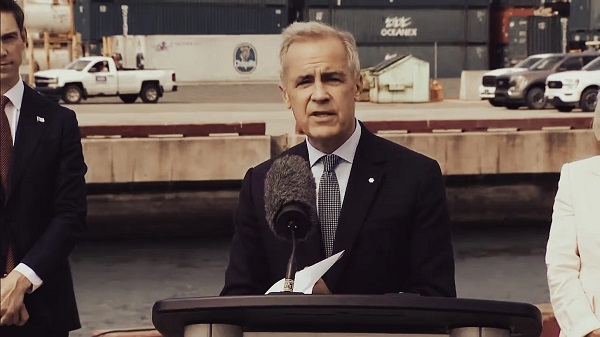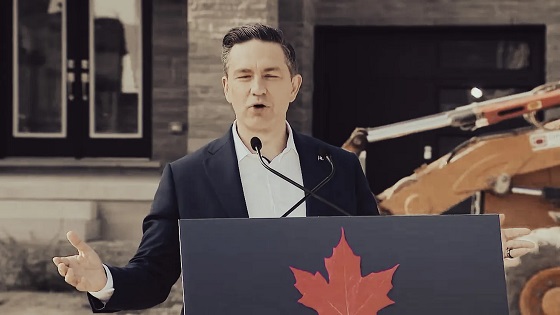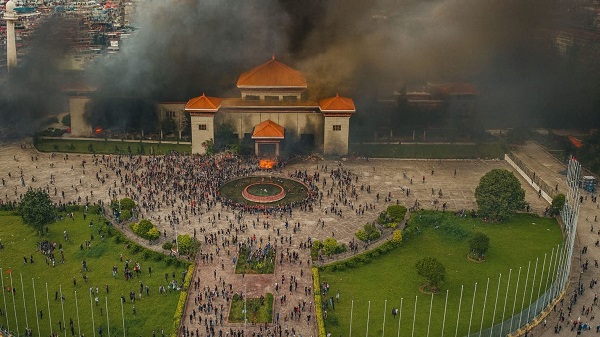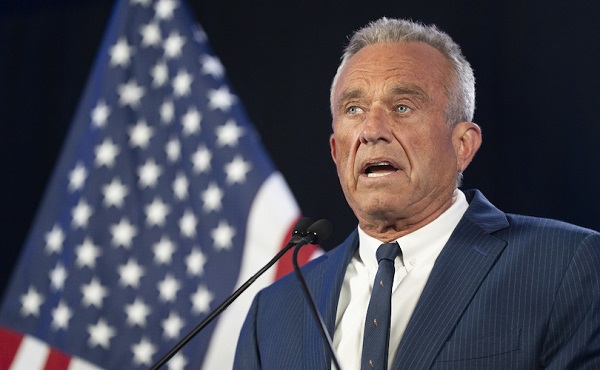Alberta
Yes Alberta has a spending problem. But it has solutions too

From the Fraser Institute
By Tegan Hill and Milagros Palacios
The Smith government’s recent fiscal update sparked concerns as once again the province has swung from budget surpluses to a budget deficit. To balance the budget, Finance Minister Nate Horner has committed to address the spending side and will “look under every stone” before considering the revenue side, and this is the right approach. Alberta’s fiscal challenges are a spending problem, not a revenue problem.
For perspective, if program spending had grown by inflation and population over the past two decades, it would be $55.6 billion in 2025/26 rather than the actual $76.4 billion. So, while the Smith government has demonstrated important restraint in recent years, total program spending and per person (inflation-adjusted) program spending is still materially higher in 2025/26 than in previous periods.
Alberta’s high spending is fuelling the projected $6.5 billion deficit. Consider that at the alternative spending level ($55.6 billion) Alberta would be enjoying a large budget surplus of $14.4 billion in 2025/26—rather than adding to the province’s red ink.
Despite this, the discussion around deficits often revolves around volatile resource revenue (e.g. oil and gas royalties). It’s true—resource revenue has declined year over year and that has an impact on the budget. But again, it’s not the underlying problem. The problem is successive governments have increased spending during good times of relatively high resource revenue to levels that are unsustainable without incurring deficits when resource revenue inevitably declines. In other words, the fiscal framework for the provincial government relies too heavily on volatile resource revenues to balance its budget.
As a share of the economy, non-resource revenue (e.g. personal income and business income) averaged 12.5 per cent over the last decade (2016/17 to 2025/26) compared to 11.1 per cent between 2006/07 to 2015/16. In other words, Alberta is collecting a larger share of non-resource revenues than in the past as a share of the economy. This statistic alone makes it difficult to argue that the province has a revenue problem.
So, what can the government do to rein in its spending?
Government employee compensation typically accounts for nearly 50 per cent of the Alberta government’s operating spending. From 2019 to 2024, the number of provincial government jobs in Alberta increased by 46,500. Over that period, total compensation for provincial government jobs jumped from $24.2 billion to $29.5 billion. Put differently, government compensation now costs $5.3 billion more annually than pre pandemic. The government should reduce the number of government jobs back to pre-pandemic levels through attrition and a larger program review.
Business subsidies (a.k.a. corporate welfare) is another clear area for reform. Business subsidies consume a meaningful share of each ministries‘ annual budget costing billions of dollars. For example, in 2024/25, grants were the second-largest expense for the ministry of environment at $182.0 million and the largest expense for the ministry of arts, culture and status of women at $154.2 million. For the ministry of energy and minerals, grants totalled $166.3 million in 2024/25. With more than 25 ministries, the provincial government could find meaningfully savings by requiring that each to closely examine their budgets and eliminate business subsidies to yield savings.
The Smith government’s recent fiscal update rung the alarm bells, but to fix the province’s fiscal challenges, one must first understand the underlying problem—Alberta has a spending problem. Fortunately, there are some clear first steps to tackle it.
Alberta
Provincial pension plan could boost retirement savings for Albertans

From the Fraser Institute
By Tegan Hill and Joel Emes
In 2026, Albertans may vote on whether or not to leave the Canada Pension Plan (CPP) for a provincial pension plan. While they should weigh the cost and benefits, one thing is clear—Albertans could boost their retirement savings under a provincial pension plan.
Compared to the rest of Canada, Alberta has relatively high rates of employment, higher average incomes and a younger population. Subsequently, Albertans collectively contribute more to the CPP than retirees in the province receive in total CPP payments.
Indeed, from 1981 to 2022 (the latest year of available data), Alberta workers paid 14.4 per cent (annually, on average) of total CPP contributions (typically from their paycheques) while retirees in the province received 10.0 per cent of the payments. That’s a net contribution of $53.6 billion from Albertans over the period.
Alberta’s demographic and income advantages also mean that if the province left the CPP, Albertans could pay lower contribution rates while still receiving the same retirement benefits under a provincial pension plan (in fact, the CPP Act requires that to leave CPP, a province must provide a comparable plan with comparable benefits). This would mean Albertans keep more of their money, which they can use to boost their private retirement savings (e.g. RRSPs or TFSAs).
According to one estimate, Albertans’ contribution rate could fall from 9.9 per cent (the current base CPP rate) to 5.85 per cent under a provincial pension plan. Under this scenario, a typical Albertan earning the median income ($50,000 in 2025) and contributing since age 18, would save $50,023 over their lifetime from paying a lower rate under provincial pension plan. Thanks to the power of compound interest, with a 7.1 per cent (average) nominal rate of return (based on a balanced portfolio of investments), those savings could grow to nearly $190,000 over the same worker’s lifetime.
Pair that amount with what you’d receive from the new provincial pension plan ($265,000) and you’d have $455,000 in retirement income (pre-tax)—nearly 72 per cent more than under the CPP alone.
To be clear, exactly how much you’d save depends on the specific contribution rate for the new provincial pension plan. We use 5.85 per cent in the above scenario, but estimates vary. But even if we assume a higher contribution rate, Albertan’s could still receive more in retirement with the provincial pension plan compared to the current CPP.
Consider the potential with a provincial pension contribution rate of 8.21 per cent. A typical Albertan, contributing since age 18, would generate $330,000 in pre-tax retirement income from the new provincial pension plan plus their private savings, which is nearly one quarter larger than they’d receive from the CPP alone (again, $265,000).
Albertans should consider the full costs and benefits of a provincial pension plan, but it’s clearly Albertans could benefit from higher retirement income due to increased private savings.
Alberta
OPEC+ chooses market share over stability, and Canada will pay

This article supplied by Troy Media.
OPEC+ output hike could sink prices, blow an even bigger hole in Alberta’s budget and drag Canada’s economy down with it
OPEC and its allies are flooding the global oil market again, betting that regaining lost market share is worth the risk of triggering a price collapse.
On Sept. 7, eight of its leading members agreed to boost production by 137,000 barrels per day beginning in October. That move, taken more than a year ahead of schedule, marks the start of a second major unwind of previous output cuts, even as warnings of a supply glut grow. OPEC+, a coalition led by Saudi Arabia and Russia, coordinates oil production targets in an effort to influence global pricing.
This isn’t oil politics in a vacuum. It’s a direct blow to Alberta’s finances, and a growing threat to Canada’s economic stability.
Canada’s broader economy depends heavily on a strong oil and gas sector, but no province is more directly reliant on resource royalties than Alberta, where oil revenues fund everything from hospitals to schools.
The province is already forecasting a $6.5-billion deficit by spring. A further slide in oil prices would deepen that gap, threatening everything from vital programs to jobs. Every drop in the benchmark West Texas Intermediate price, currently averaging around US$64, is estimated to wipe out another $750 million in annual revenue.
When Alberta’s finances falter, the ripple effects spread across the country. Equalization transfers from Ottawa to have-not provinces decline. Private investment dries up. Energy-sector jobs vanish not just in Alberta, but in supplier and service industries nationwide. Even the Canadian dollar takes a hit, reflecting reduced confidence in one of the country’s key economic engines. When Alberta stumbles, Canada’s broader economic momentum slows with it.
The timing couldn’t be crueller. October marks the end of the summer driving season, typically a lull for fuel demand. Yet extra supply is about to hit a market already leaning bearish. Oil prices have dropped roughly 15 per cent this year; Brent crude is treading just above US$65, still well beneath April’s lows.
But OPEC+ isn’t alone in raising the taps. Non-OPEC producers in Brazil, Canada, Guyana and Norway are all increasing production. The International Energy Agency warns global supply could exceed demand by as much as 500,000 barrels per day.
The market is bracing for a sustained price war. Alberta is staring down the barrel.
OPEC+ claims it’s playing the long game to reclaim market share. But gambling on long-term gains at the cost of short-term pain is reckless, especially for Alberta. The province faces immediate financial consequences: revenue losses, tougher budget decisions and diminished policy flexibility.
To make matters worse, U.S. forecasts are underwhelming, with an unexpected 2.4-million-barrel build in inventories. U.S. production remains at record highs above 13.5 million barrels per day, and refinery margins are shrinking. The signal is clear: demand isn’t coming back fast enough to absorb growing supply.
OPEC+ may think it’s posturing strategically. But for Canada, starting with Alberta, the fallout is real and immediate. It’s not just a market turn. It’s a warning blast. And the consequences? Jobs lost, public services cut and fiscal strain for months ahead.
Canada can’t direct OPEC. But it can brace for the fallout—and plan accordingly.
Toronto-based Rashid Husain Syed is a highly regarded analyst specializing in energy and politics, particularly in the Middle East. In addition to his contributions to local and international newspapers, Rashid frequently lends his expertise as a speaker at global conferences. Organizations such as the Department of Energy in Washington and the International Energy Agency in Paris have sought his insights on global energy matters.
Troy Media empowers Canadian community news outlets by providing independent, insightful analysis and commentary. Our mission is to support local media in helping Canadians stay informed and engaged by delivering reliable content that strengthens community connections and deepens understanding across the country
-

 Crime19 hours ago
Crime19 hours agoCharlie Kirk ASSASSINATED
-

 Business2 days ago
Business2 days agoMark Carney’s Climate Competitiveness Pitch Falls Flat
-

 Business1 day ago
Business1 day agoPoilievre: “Carney More Irresponsible Than Trudeau” as Housing, Jobs, and Energy Failures Mount
-

 Crime21 hours ago
Crime21 hours agoConservative speaker and celebrity Charlie Kirk shot during Q & A event at Utah Valley University
-

 Alberta1 day ago
Alberta1 day agoProvince urging post secondary students to apply for loans, grants, scholarships, bursaries and awards
-

 International1 day ago
International1 day agoNepal Tried To Censor The Internet. Young People Set Parliament on Fire.
-

 Business2 days ago
Business2 days agoCanada Post is broken beyond repair
-

 Business2 days ago
Business2 days agoCanada can’t allow so many people to say ‘no’ to energy projects









